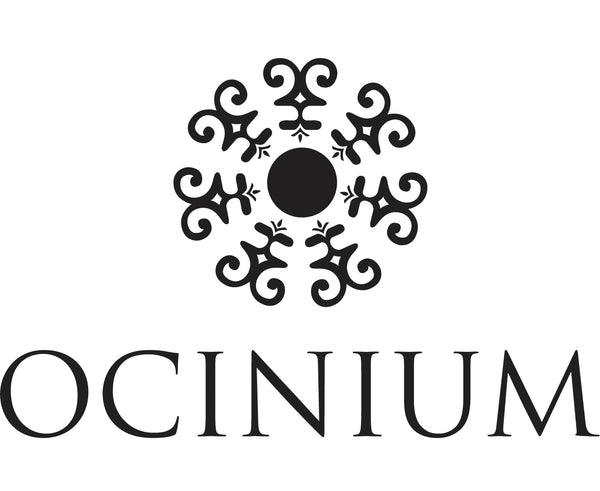How To Amplify Your Skin's Production of Collagen To Achieve Ageless Beauty
September 11 2017 – Cassandra Hilton

The role of collagen and its importance in maintaining beautiful skin is a topic that’s been dominating beauty recently, with the latest new treatments of topical collagen peptides, ingested peptides or collagen induction purporting to enhance collagen production and give your skin a smooth, youthful glow.
But let's begin with the basics!
What is collagen?
Collagen is the most abundant protein in the body and the most prevalent component of the extracellular matrix. Given that collagen constitutes three quarters of the dry weight of the skin, we clearly need to keep making the stuff, and in plentiful amounts.
The production slowdown of collagen is a natural feature of ageing. You can’t stockpile collagen against future shortages as it exists in finite amounts in the skin. You can, however, ensure that your collagen production schedule is on track for renewal!
The extracellular matrix, or ECM, is a gel-like matrix composed of polysaccharides such as hyaluronic acid and proteins that provides structural and biochemical support to the surrounding cells of the skin. It’s also what gives skin a plump, smooth surface and the resilient bounce of youthful, glowing skin.
Mother Nature has provided us with interconnecting repair systems that work to keep skin’s supporting structures in good shape—ECM components like collagen and elastin undergo cycles of breakdown and renewal in much the same way that your skin cells infinitely renew themselves on a regular schedule.
Most of the skin’s repair activities take place in the dermis, and collagen production is one of the busiest departments. Fibroblast workers tirelessly crank out new collagen while enzyme workers break down old collagen and carry it away.
What damages collagen
This dermal maintenance and renewal factory hums along nicely…until you reach age 35 or so, or earlier if you have been exposed to a lot of sun, pollution or smoke. Suddenly, your fibroblasts begin to tire and slack off, and in the meantime, enzymes, encouraged by oxidative stress, start working overtime increasing wear and tear and signs of ageing.
Signs you’ve lost your bounce
At first you may notice fine lines around the eyes, or maybe the marionette lines from nostril to mouth. This is because your collagen has become less abundant, skin density decreases, so does tensile strength and the ability to resist gravity. In short, your skin loses its ability to bounce back.
Target collagen at the fibroblast level
To remedy collagen depletion, your best option is to boost collagen production at the fibroblast level; ensuring the production of new collagen is matching breakdown and removal of the old.
Topical alternatives to peptides
While the verdict is still out on signal peptides, retinoic acid and retinol have 40 years of studies supporting their efficacy. Retinoic acid is a genuine cell signaller—it works by attaching to retinoic acid receptors (RARs) on fibroblasts, instructing them to perform several tasks, including to produce more collagen, make more skin cells, induce collagen breakdown, normalize skin cell development, regulate sebum, etc. Be sure to read our beginners guide to retinol if you are new to this super hero!
When it comes to research one of many retinol studies showed that “a four-week treatment with 0.1% retinol increased levels of procollagen types 1 and 3 and reduced wrinkles after 12 weeks.”
The importance of vitamins A + C
Retinol sends a signal to the fibroblast to make more collagen, but vitamin C is the rate-limiting step in the biosynthesis of collagen—meaning it must be present in skin tissue for that command to be carried out.
In an example of synergy, researchers found that “repeated topical application of a preparation containing both retinol and vitamin C could reverse, at least in part, skin changes induced by both chronological and photoaging.”
Elemental A+C+E Serum provides a synergistic blend of antioxidants vitamins A, C and E with hyaluronic acid to bolster collagen production. Ingestible beautyWhen it comes to supplementing the diet with ingestible collagen, hydrolyzed collagen supplements come in many forms with some containing the collagen types I (mostly bovine + fish source) and III (predominantly bovine source) are known for restoring skin firmness and elasticity. Collagen type II, predominately chicken source, has been demonstrated to reduce joint problems associated with arthritis, but its impact on skin is negligible.
Food sources to boost collagen
Remember, your body makes its own collagen on a regular schedule, that is if you continue to supply it with the necessary building materials.
To build collagen, Cassandra suggests eating soups made with bone broth. Along with plentiful amounts of collagen, this provides other necessary minerals like zinc and calcium, as well as a generous helping of hyaluronic acid.
Fatty fish such sardines, mackerel and salmon, two to three times a week, is not only an excellent source of protein; it also comes with a necessary helping of omega-3 essential fatty acids of the eicosapentaenoic acid (EPA) type.
One study on EPA found that “eicosapentaenoic acid (EPA) was found to inhibit UV-induced matrix metalloproteinase-1 (MMP-1) expression in human dermal fibroblasts.”In other words, the enzyme MMP-1 that works overtime to break down collagen is inhibited by EPA.
Microbial skin helpers
Our understanding of the guts microbiome and manipulation with probiotics is quite promising.
Lactobacillus plantarum “had a significant reduction in wrinkle depth at week 12…and skin elasticity in the probiotic group improved by 13.17% (p < 0.05 vs. controls) after 4 weeks and by 21.73% (p < 0.01 vs. controls) after 12 weeks.
Bifidobacterium appear to prevent UV damage to skin.
Lactobacilli help to subdue inflammation, prevent water loss, diminish acne and improve barrier function.
Streptococcus thermophilus stimulates ceramide protection in the skin and thus helps with strengthing barrier function.
Our tips for increasing collagen
When opting in for a serum look for well formulated stabilized ascorbic acid serums or the latest vitamin c esters such as ascorbyl tetraisoplamitate in Luminosity Vitamin C Serum that enhance stability and efficacy as part of the delivery system—remember the rule, no vitamin C, no collagen production!
Collagen boosting foods
Bone broth, one cup per day
Oily fish 2-3 times per day
Vegetable sources rich in vitamin C and E such as dark green vegetables, citrus, strawberries, melon, tomato, potato, peppers, parsley, sunflower seeds, hazelnuts, and almonds.
Supplements
Ideally, we would get all important nutrients from a healthy diet rich in whole foods. “However, it’s not that simple with today’s lifestyle; people need high quality supplements to fill the gaps in their diets” says Cassandra founder of Ocinium and skin naturopath.
Probiotics Bifidobacterium spp + Lactobacilli spp
Nutraceuticals with vitamins A, C, E, zinc, selenium and copper
Hydrolysed collagen powders with hyaluronic acid
Amino acid complexes with glycine, proline, and hydroxyproline, ensure adequate levels of vitamin c
Topically Applied Skincare Routine to Build Collagen
Morning: Immortelle Vitamin B3 Serum, Luminosity Vitamin C Serum, Metamorphis Multi-Vitamin Cream, remember SPF!
Evening: Immortelle Vitamin B3 Serum, Elemental Vitamin A+C+E Serum, Metamorphis Multi-Vitamin Cream, Green Tea + Ginseng Facial Oil
References
- Retinoids in the treatment of skin aging: an overview of clinical efficacy and safety, Mukherjee at : Click Here For Reference
- Histological evaluation of a topically applied Retinol-Vitamin C combination. Seité S, Bredoux C, Compan D, et al. Skin Pharmacol Physiol. 2005;18:81–7.
- Photoprotective and anti-skin-aging effects of eicosapentaenoic acid in human skin in vivo. Kim HH at : Click Here for Reference
- Clinical Evidence of Effects of Lactobacillus plantarum HY7714 on Skin Aging: A Randomized, Double Blind, Placebo-Controlled Study, Dong Eun Lee, et. al. J. Microbiol. Biotechnol. (2015), 25(12), 2160–2168 .Click Here For Reference.
- Increase of skin-ceramide levels in aged subjects following a short-term topical application of bacterial sphingomyelinase from Streptococcus thermophilus. Di Marzio, et al. Int J Immunopathol Pharmacol. 2008 Jan-Mar;21(1):137-43.
- Collagen alterations in chronically sun-damaged human skin, Schwartz E. et al, Photochem Photobiol. 1993 Dec;58(6):841-4
